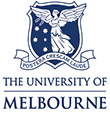The relationship between blood culture time-to-positivity and Enterococcus faecalis infective endocarditis
Authors:
- Robson, Christopher
- Khan, Hakim
- Junckerstorff, Ralph K.
- Graham, Maryza
- Stuart, Rhonda L.
- Nicholls, Stephen J.
- Rogers, Benjamin A.
Details:
Pathology, 2025-06-06
Article Link: Click here
Infective endocarditis (IE) can be difficult to diagnose due to non-specific symptoms and the imperfect sensitivity of blood cultures and echocardiography. The interval between blood culture collection and the first detection of bacterial growth is known as time-to-positivity (TTP) and is considered a proxy for bacterial load. Several studies have demonstrated a shorter TTP in staphylococcal IE compared to staphylococcal bacteraemia of other sources; however, evidence in enterococcal IE is limited. We characterise the relationship between blood culture TTP and a diagnosis of Enterococcus faecalis IE, along with the impact of demographic and patient-specific factors. Retrospective analysis was performed for patients with blood cultures growing E. faecalis at a single centre from 2017 to 2021. Exclusion criteria included polymicrobial growth, repeat/relapsed episodes of enterococcal bacteraemia and receipt of pre-blood culture antibiotics. TTP was compared between participants with and without a definite diagnosis of IE per the 2023 Duke-International Society for Cardiovascular Infectious Diseases criteria. Comparison was also made between participants with and without a clinical diagnosis of IE. After exclusions, 114 episodes of E. faecalis bacteraemia were identified. Twenty-seven (24%) had a definite diagnosis of IE. Nineteen of the 27 (70%) IE cases were left-sided, and three (11%) were device-related. One case of prosthetic valve endocarditis was included. Other infective sources included the urinary tract (37/114, 32%) or an unidentified source (34/114, 30%). Median TTP was shorter in bacteraemia of other sources than in Duke definite IE (10.6 vs 11.3 h), but was not statistically significant (p=0.07). The area under the receiver-operator characteristic curve for the ability of TTP to diagnose IE was 0.62. Median TTP was shorter in the clinical IE group than bacteraemia of other sources (10.0 vs 11.4 h); however, this difference was not significant (p=0.34). E. faecalis IE was not associated with a shorter TTP than bacteraemia of other sources in this study. Higher-quality evidence is required to inform the utility of TTP in this condition.


